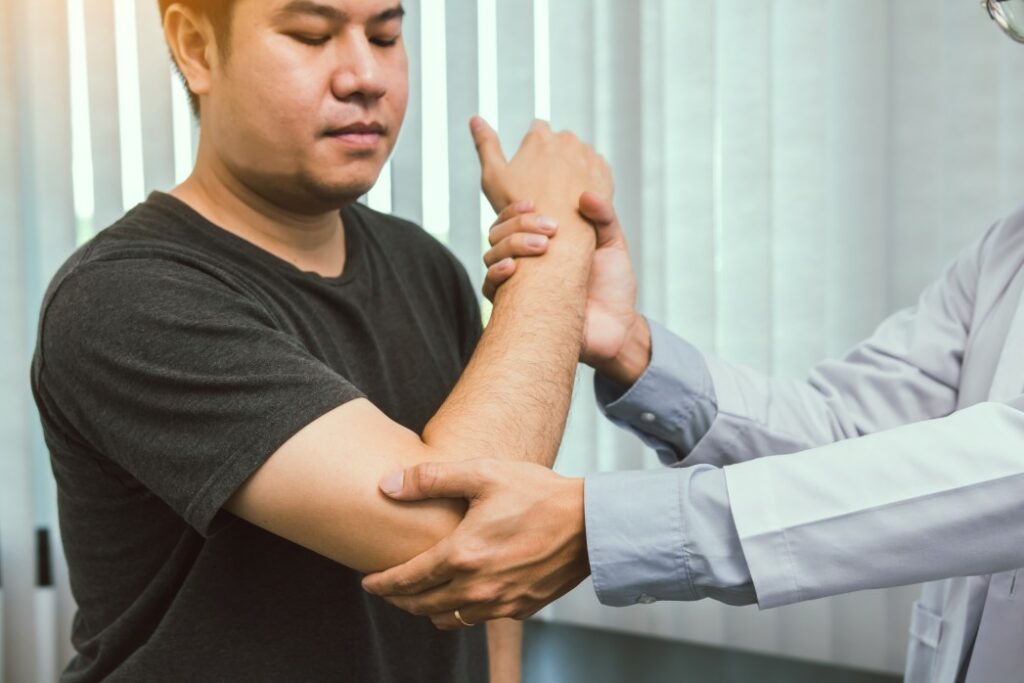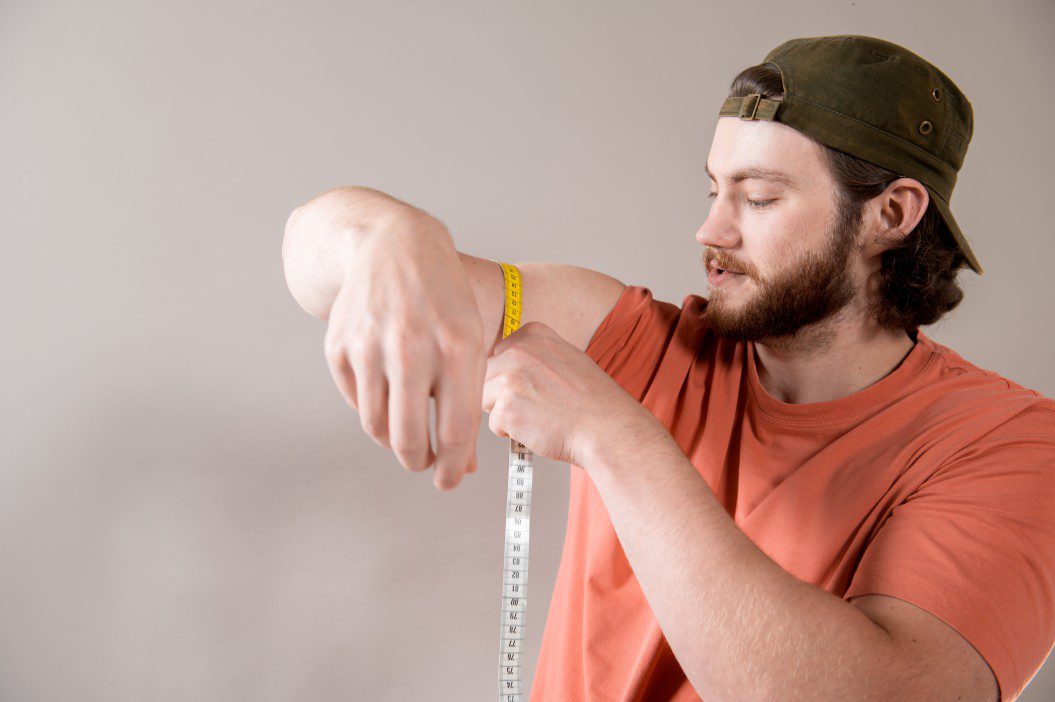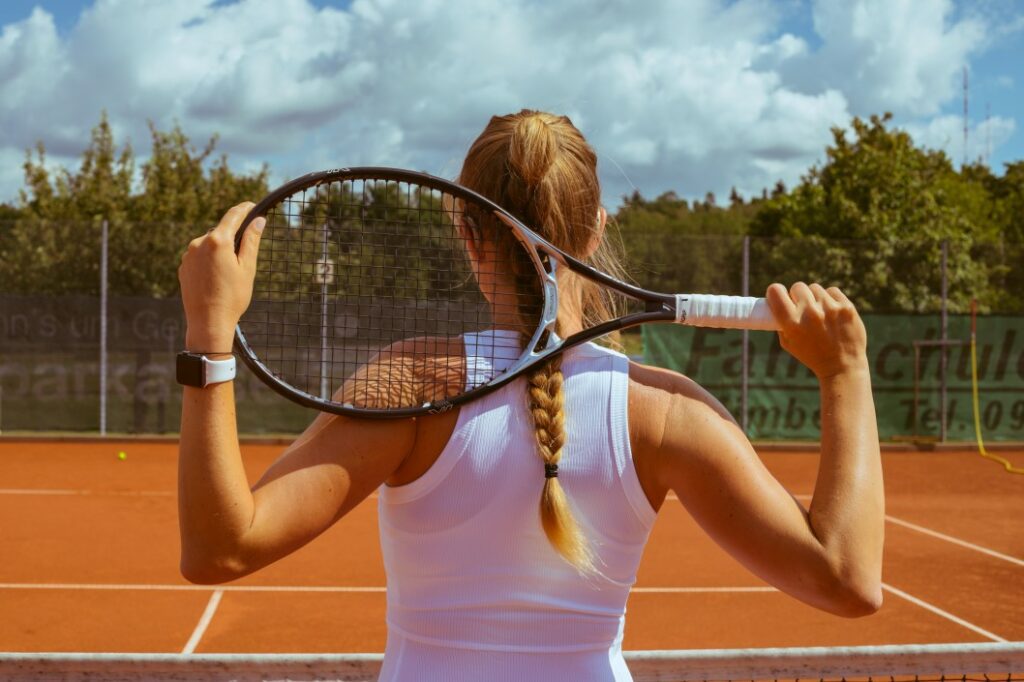

How To Wear A Tennis Elbow Brace
Tennis elbow braces and straps may be able to alleviate some of the pain you feel while playing your favorite sport.
However, the correct positioning of a brace is vital for best outcomes and to prevent re-injuring the patient.
How can a Tennis Elbow Brace Help?
Tennis elbow braces work by diverting stress pressures away from the afflicted area, so reducing discomfort and helping to keep the injured area healthy and strong.
Using a tennis elbow brace will alleviate your discomfort right away. If this does not happen, it is possible that your illness is severe, and you should see a doctor immediately.
In any other case, you may not be experiencing this problem. Your physiotherapist may be able to recommend something better in this scenario.
How to Wear A Tennis Elbow Brace Properly
If your forearm hurts as you work, place the brace over the broadest area of your arm. The brace alleviates discomfort and improves grip strength for the vast majority of tennis elbow or golfer's elbow sufferers.
The strap effectively captures the forces that cause discomfort and accelerates recovery. For this ailment, this is the most common method of therapy available.
What Elbow Support Strap Do I Need?

The price of the elbow strap is the first item to consider when making a purchase. There are many options, but your budget will play a role in your decision.
The modifications include the epicondylitis clasp, the elbow strap, and the elbow sleeve.
Epicondylitis clasp
The most expensive elbow support is only practical if it is custom-fitted. An epicondylitis clasp is a strap that puts pressure on the muscles below the elbow discomfort to secure the arm. An armband with a plastic clip is all that is needed.
This applied pressure deflects specific tissue-damaging strains. With this clasp, the tendon may work at a different angle, helping alleviate the discomfort in the process.
In terms of treating elbow pain, the ability to place this clasp directly on the source of discomfort is a huge one. In contrast, the disadvantages include the high cost and limited supply.
Tennis elbow strap
To protect the upper arm, these basic straps are used. A handful comes with additional pressure cushions for those who suffer from lower-back discomfort.
These traps are employed to squeeze the upper forearm and absorb pressures that go through the soft tissues to the area of discomfort. When the tendon's angle of function and its stresses change, a quicker recovery may be achieved.
With this strap, you won't have to spend a fortune. It's also simple to put on, and the compression level may be adjusted to suit your preferences. Epicondylitis clasps are more precise. However, these straps aren't insulated.
Tennis sleeve
Using the tennis sleeve is an excellent way to keep your elbow warm and tight. It combines a basic strap with an elbow sleeve. Adjustments may be made using the belt.
This sleeve's correct amount of warmth will aid in the speedier recovery of the afflicted region. The whole joint may be supported by it. On the other hand, this brace is bulky and cumbersome to wear. In addition, the strap can't be adjusted precisely.
How to Put On An Elbow Tennis Brace:
There are no solutions for expert medical advice, diagnosis, or treatment that this guide provides. If you have any concerns about your health or a medical issue, always seek the advice of a doctor or other trained health care provider.
Step One: Measure your Arm

Feel free to skip to Step 3 if you've previously bought a brace and are confident in choosing the proper size.
Wearing a tennis elbow brace that's correctly fitted is essential to getting the maximum out of your workout. One-size-fits-all or individual sizes are available depending on the brand and manufacturer.
You should still measure your arm to verify that the brace you buy fits appropriately since all straps have a minimum and maximum range of usage for optimal effectiveness.
If you have a flexible measuring tape that wraps around your arm, you may use it to get an accurate measurement.
Measure the circumference of your forearm, right below your elbow, by sticking your arm out straight.
If you don't have any other options, an overgrip or shoelace may be used for a normal measuring tape. If you're using a shoelace, wrap it around your forearm below your elbow and hold it where it overlaps.
Next, measure the shoelace length from the tip to the end you're holding. You'll need this information for the following stage in choosing a brace.
Step Two: Pick a Brace
When it comes to tennis elbow braces, there is a wide variety to choose from that all work in the same way and provide comparable advantages.
There are, however, two crucial aspects to keep in mind for the greatest outcomes. Ensure the strap is comfortable to wear since you will be wearing it for long periods.
Secondly, you want to choose a long-lasting alternative that will withstand repeated usage without breaking. You can avoid low-quality items by reading prior customer feedback.
Don't forget to compare the size to your measurements from the previous stage after finding the one you like. To assist you in discovering the right fit, remember that many of the braces on the market now are adjustable.
Step Three: Unpack the Brace and Prep Your Arm
Take a look at the contents of your tennis elbow brace once you've bought one. When purchasing, there are many band lengths to choose from, so select the suitable size.
As a last check, we recommend that you go over any associated instructions. You'll find it simpler to put on your tennis elbow brace if you thread the strap through the rings first.
To begin, put on a short-sleeved shirt or tank top and take off any jewelry or timepieces that could go in the way of getting the perfect placement.
Step Four: Place your Fingers Through the Brace
Make sure the strap is loose before attempting to put the brace on. You may need to remove the Velcro from the goods to do so.
Be cautious while putting on the brace, and make sure the pad, if present, is pointing inward so that it can give appropriate support to the hand of your afflicted arm.
Step Five: Pull the Arm Brace Towards Your Body
Brace up your arm after it's placed over your hand. From the point of your elbow, it should measure around 1-3 inches (3-8 cm).
You want to keep the brace away from your elbow's crease to minimize additional discomfort and guarantee an adequate range of motion.
Step Six: Position the Brace
You should place the brace on your forearm between the top and outer border of your forearm.
Another thing to remember is that you should slip the brace a few inches lower (toward your wrist) where you're experiencing discomfort. Wherever you feel pain, you should place your brace pad.
Move your fingers and watch the muscles on the outside of your arm below the elbow wiggle to locate the correct location of your arm for implantation.
Step Seven: Tighten the Brace
The velcro strap should be gradually tightened when you've found the optimum position for the brace.
There should be some pressure, but it shouldn't be too tight. Retightening the strap too hard might cause tingling, pain, or discoloration in your hand or arm.
Step Eight: Make Necessary Adjustments
You may need to move the brace slightly once you've tightened it against your arm for the optimal fit.
Relax the strap slightly and rotate it or move it to a new location, then tighten it again.
Depending on the model, you may have to make extra modifications to the brace. For example, in the Futuro Custom Pressure Elbow Strap, a little dial lets you alter the pressure without releasing the Velcro.
Estimated Cost: 23 USD
Supply:
- Tennis Elbow Brace
Tools:
- Measuring tape
Materials: Fabric
What to Consider When Using a Tennis Elbow Brace

The appropriate use of a tennis elbow brace may relieve some of the pain. Here are a few suggestions to consider for the best outcomes.
1. Do a Fit Check
You may not get the relief you're expecting if you don't use a brace correctly. Consequently, if you don't see any improvement or your tennis elbow worsens, we recommend seeing a doctor or certified healthcare practitioner.
Using them ensures that you're wearing your brace appropriately, but they may also assist in a good diagnosis of your pain.
2. Try out a variety of braces.
Tennis elbow braces come in various styles and materials, so it's essential to research before purchasing.
There are several braces on the market, and if one doesn't work, you may want to try something other.
3. Practice Tests
Before utilizing a brace in a match, we recommend that you try it out on the court by wearing it during practice sessions to make sure it functions as planned.
The last thing you want to discover when attempting to win a match is whether or not the brace you picked is unpleasant or does not remain in place.
4. Make Sure You Bring an Extra
Tennis elbow braces and rings that keep them together may break or fail, making them worthless no matter how good they are.
Because they're so cheap, it's always a good idea to have a spare in your suitcase just in case. This is a minor price to pay to continue playing instead of having to stop.
5. A Compression Sleeve Can Be Added
Compression sleeves and braces for tennis elbow are comparable, yet they each have unique advantages.
However, despite the lack of data, many tennis players swear by compression sleeves for tennis elbow and claim that they have seen changes. Try combining or alternating the two if you haven't already to see if it works.
FAQs
Where do you put your tennis elbow brace?
Distal to the elbow crease, approximately an inch or two centimeters away, should be the location of the strap. Wrist and finger extensors should be contracted while the belt is being applied.
You should position the padding inside the strap directly over your forearm's biceps muscle.
How long should I keep an elbow brace on?
While doing your normal activities throughout the day, you wear the elbow brace. Try it for a few weeks to see if it makes a difference to your health issues.
Aside from perhaps taking an anti-inflammatory, this may be all you need.
Should I wear my tennis elbow brace overnight?
It should be worn at night and throughout the day to alleviate discomfort. The tennis-elbow strap is the second brace (also known as a counterforce).
If you're lifting or doing yard work or grocery shopping, you should always wear this.
How tight should a tennis elbow brace be?
If the brace is tight enough, you will feel a tingling sensation, but it should not be painful. As a precaution, release the strap and then tighten it again with less power if you notice any tingling in your hand or arm.
Will there ever be a cure for tennis elbow?
Even without therapy, tennis elbow will recover (a self-limiting condition). Tennis elbow may last anywhere from six months to two years, with 90% of sufferers recovering fully within a year.
If you have a sore arm, your first line of defense is to rest it and avoid doing whatever aggravated it.
About Dr. Sean Ormond



